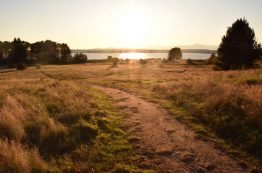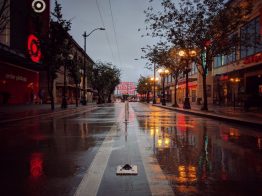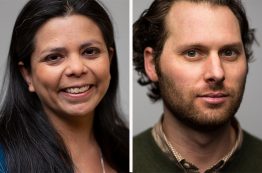As metropolises balloon with growth and sprawl widens the footprint of cities around the world, access to nature for people living in urban areas is becoming harder to find. If you’re lucky, a pocket park might be installed next to a new condominium complex on your block, or perhaps a green roof tops the building where you work downtown. But it’s unusual to find places in a city that are relatively wild — even though our evolutionary history suggests we need interactions with wild nature to thrive.
Read more at UW News »New radar technology sheds light on never-before-seen Antarctic landscape
17,000 years ago, Seattle was covered by an ice sheet that stood over 3,000 feet tall (for reference, the current tallest building in Seattle, the Columbia Tower, is just under 937 feet). As the ice advanced and eventually receded, it carved massive valleys, mountains and lakes into the earth to create the glaciated land and seascape we recognize today. These landscapes not only remind us of the area’s ancient glacial past but also provide tools to understand and predict future patterns for glaciers.
Read more »What does a hot day in Bali have to do with a dry day in Seattle?
Consider this: the U.S. West Coast has seen a decrease in rainfall between 1981-2018. UW scientists think a phenomenon called the Madden-Julian Oscillation (MJO) might be to blame. A stormy disturbance that occurs several times a year in the tropics, the MJO is similar to the El Nino Southern Oscillation, which is notorious for generating extreme winter weather in the Pacific Northwest.
Read more at Nature »Two UW Environment scientists awarded Sloan Fellowships for early-career research
Two faculty members at the University of Washington have been awarded early-career fellowships from the Alfred P. Sloan Foundation. The new Sloan Fellows, announced Feb. 12, are Kyle Armour and Jacqueline Padilla-Gamiño, both assistant professors in the College of the Environment. Open to scholars in eight scientific and technical fields — chemistry, computer science, economics, mathematics, molecular biology, neuroscience, ocean sciences and physics — the fellowships honor those early-career researchers whose achievements mark them among the next generation of scientific leaders.
Read more at UW News »Polar bears in Baffin Bay skinnier, having fewer cubs due to less sea ice
Polar bears are spending more time on land than they did in the 1990s, due to reduced sea ice, new University of Washington-led research has found. Bears in Baffin Bay are getting thinner and adult females are having fewer cubs than was recorded at times when sea ice was more available. The new study published in Ecological Applications compares polar bear satellite tracking and visual monitoring data from the 1990s with more data collected in recent years.
Read more at UW News »





